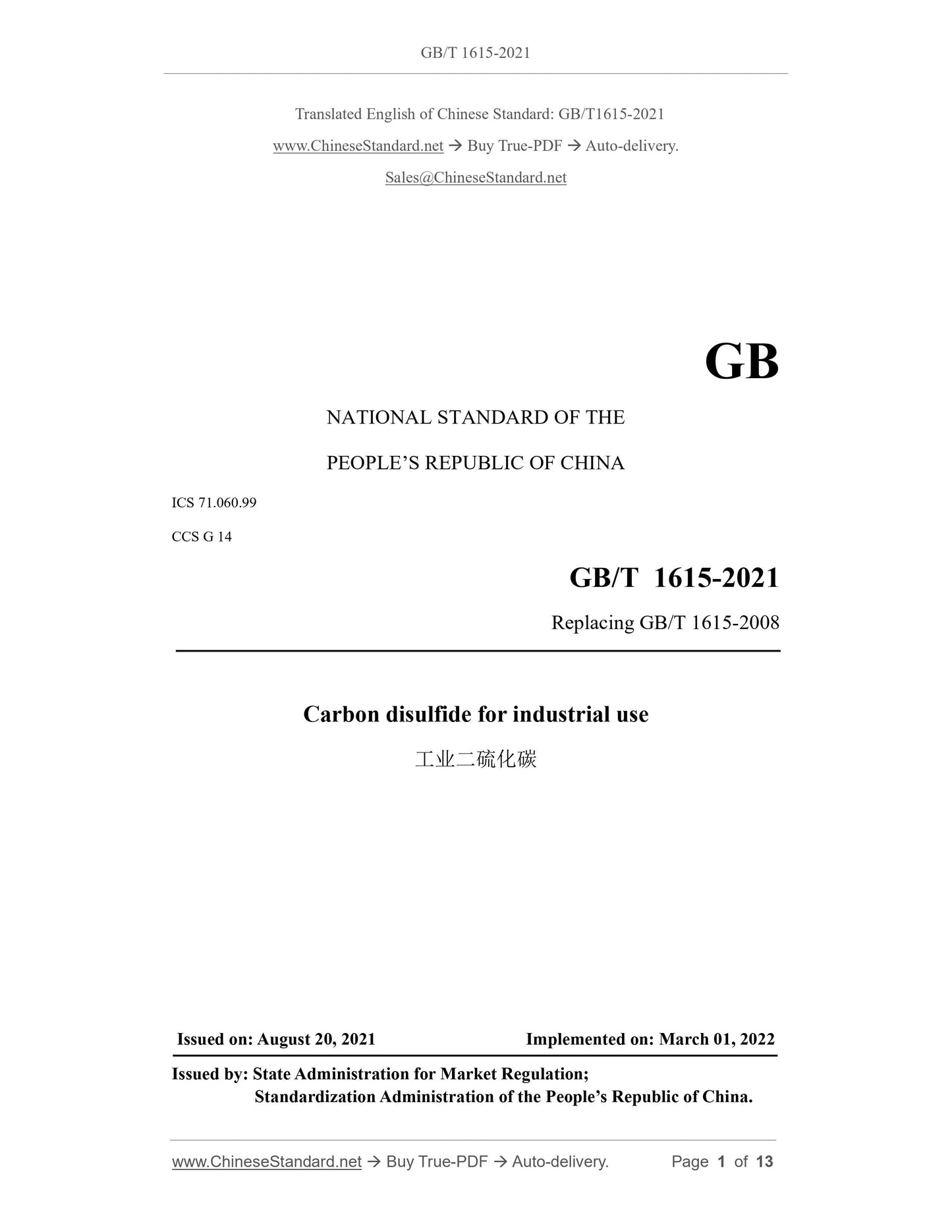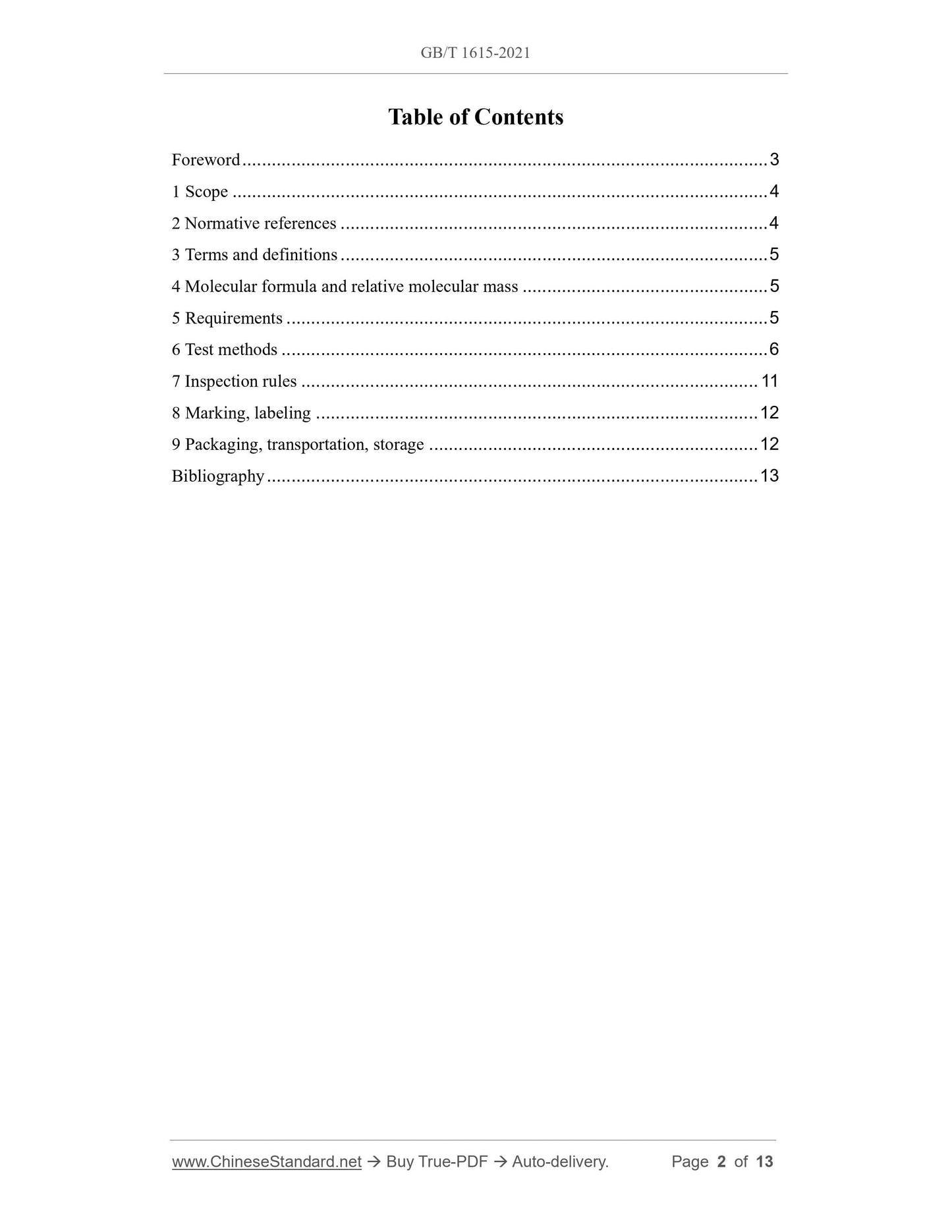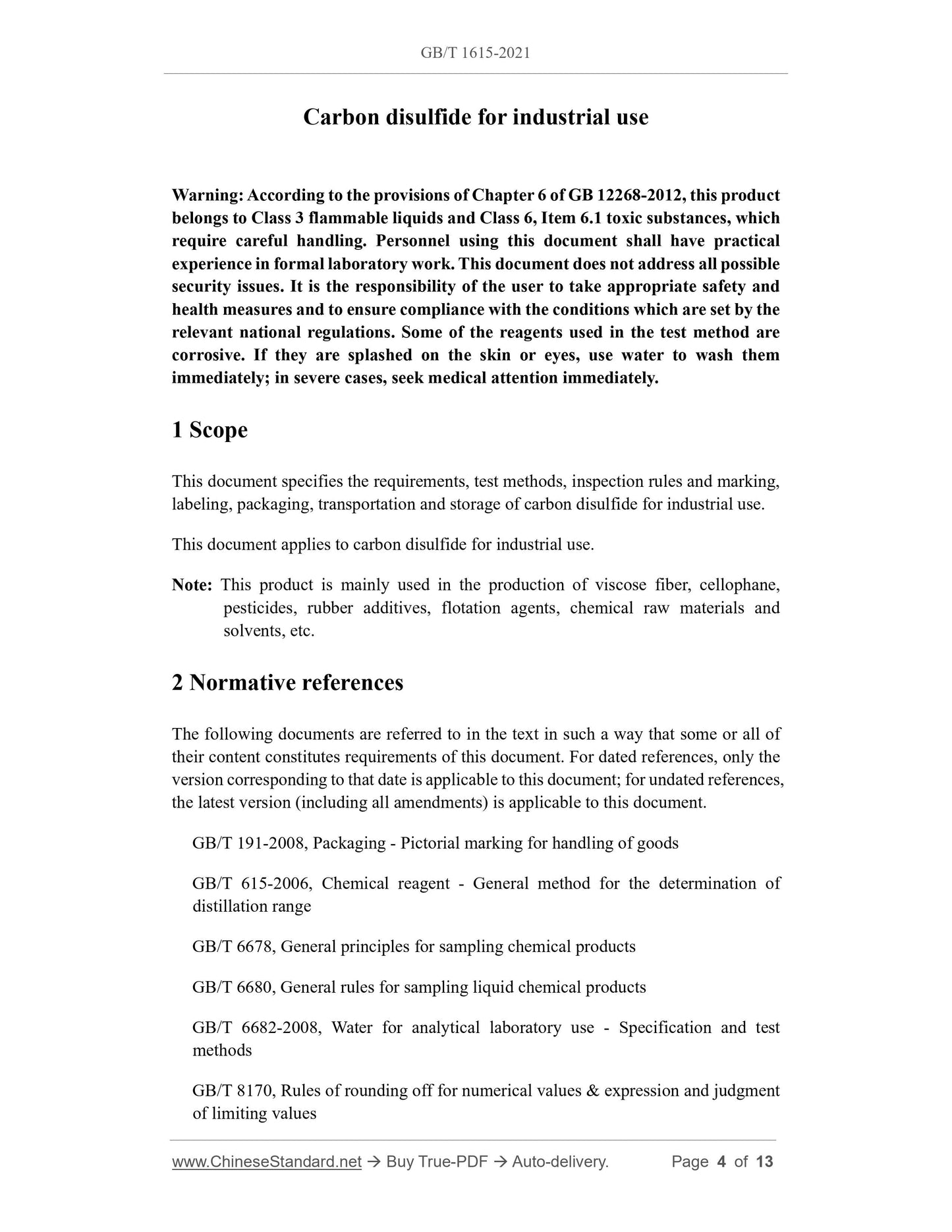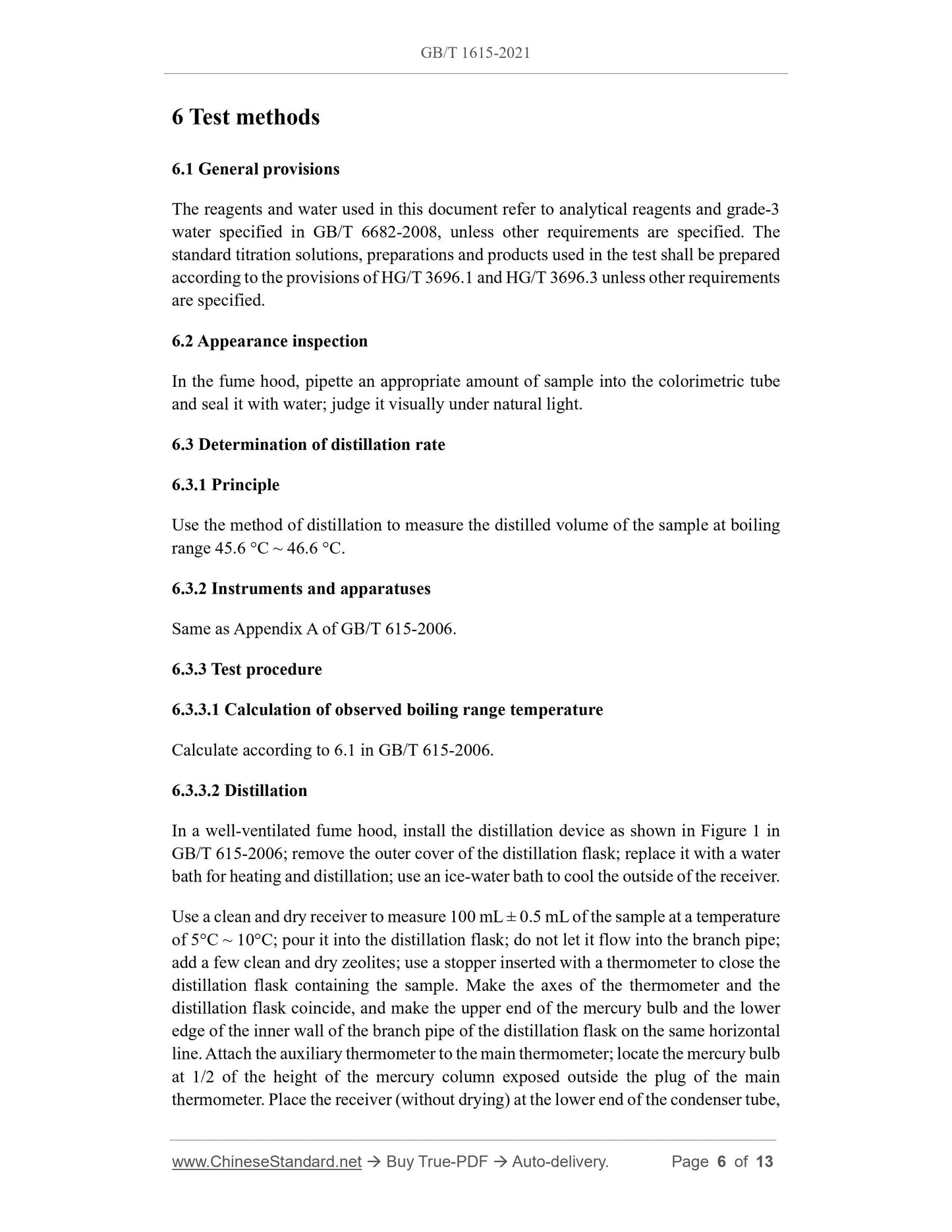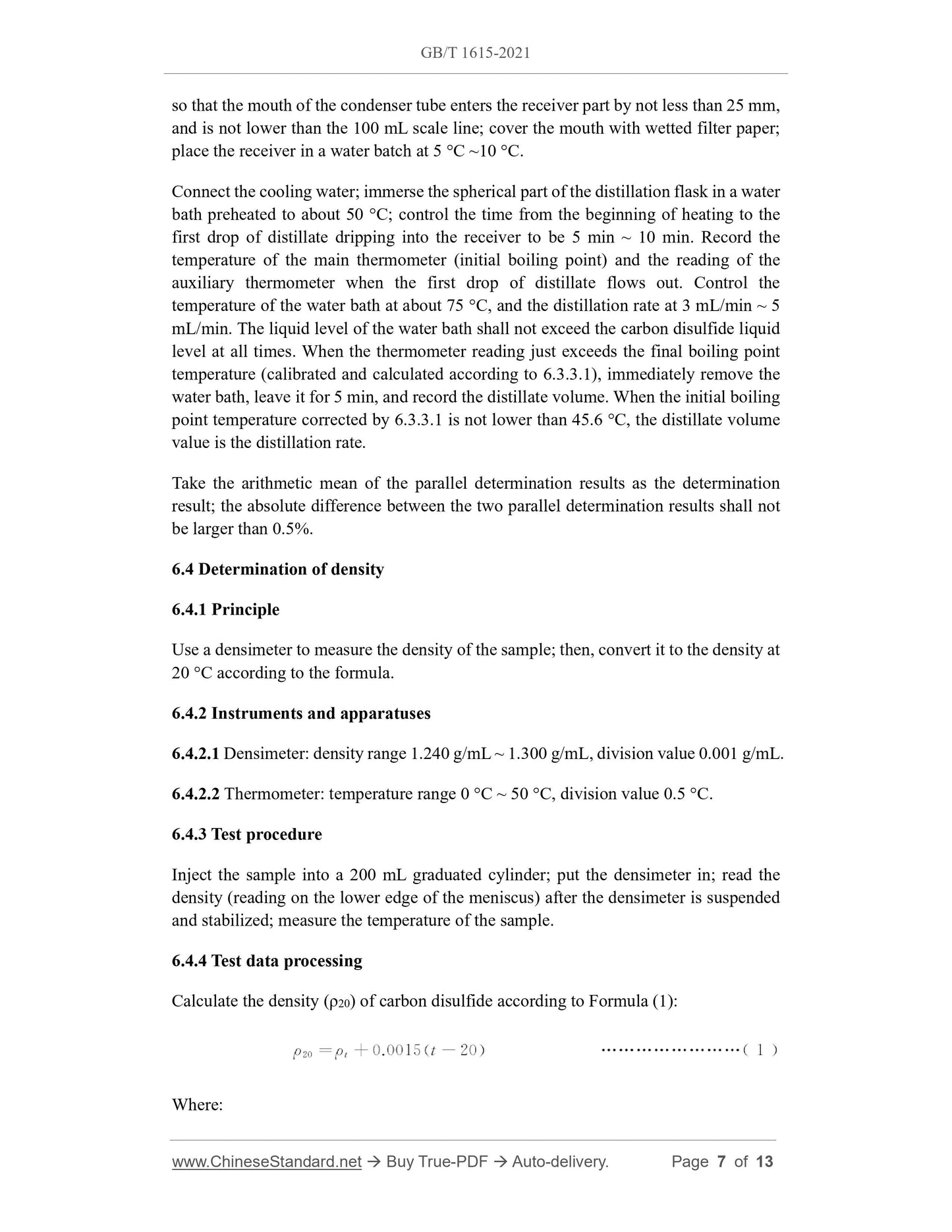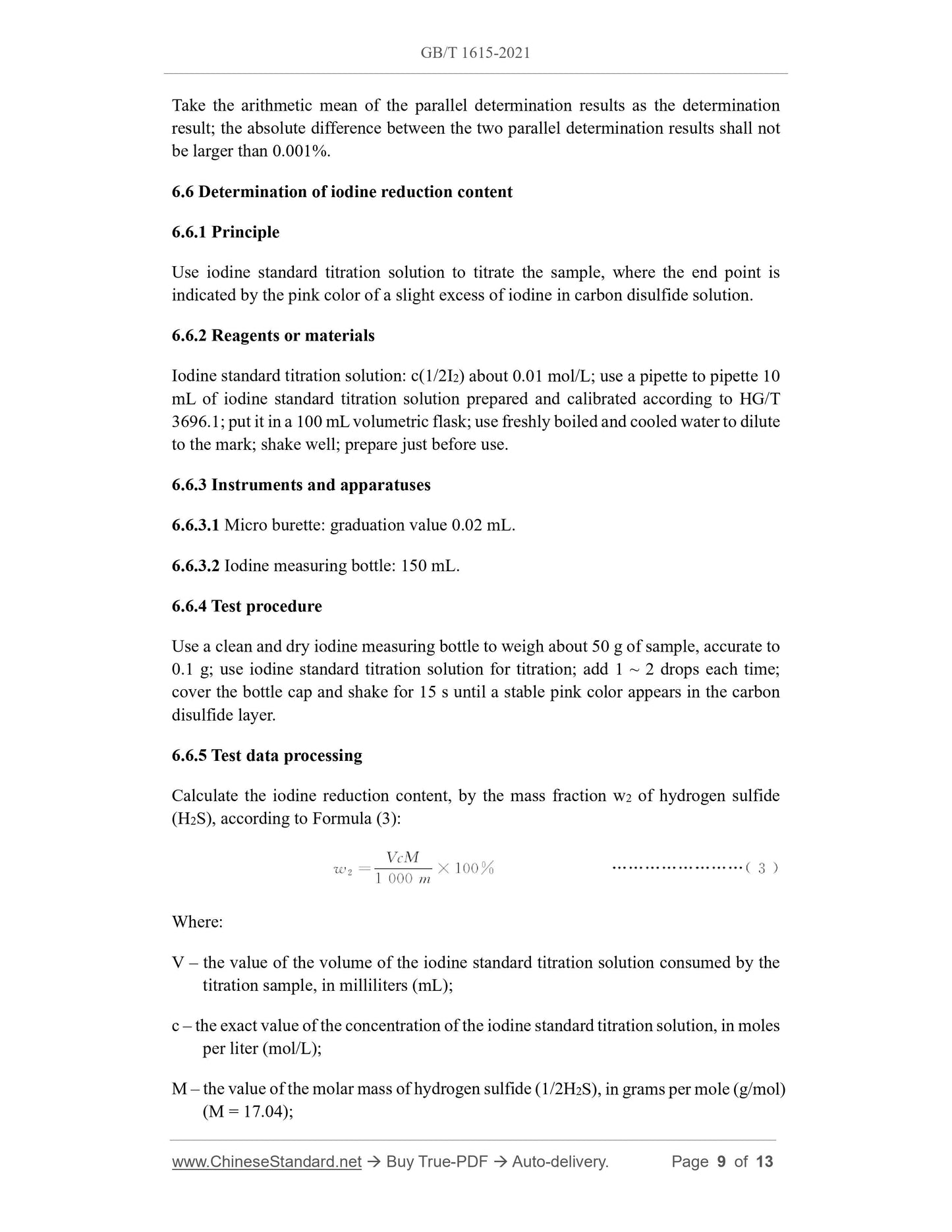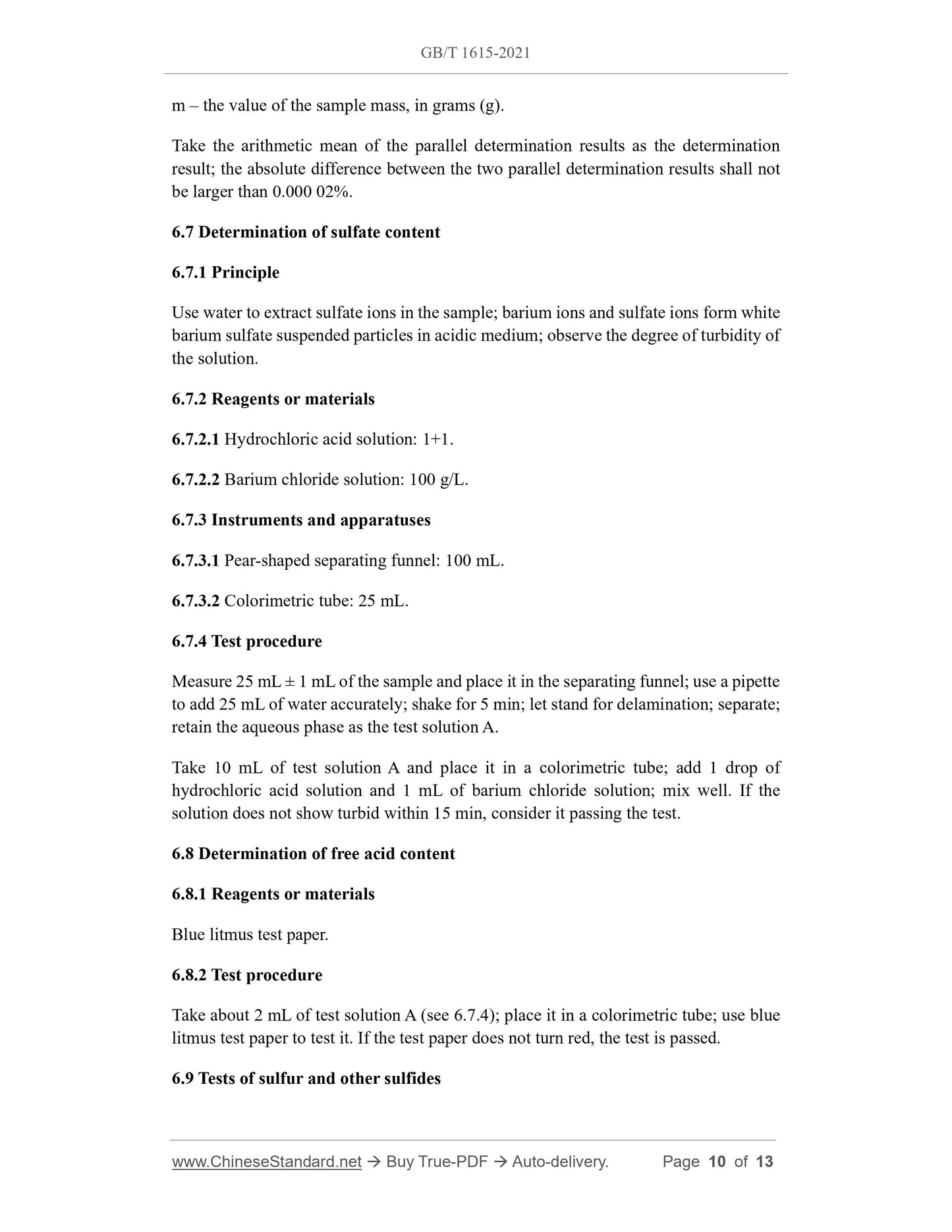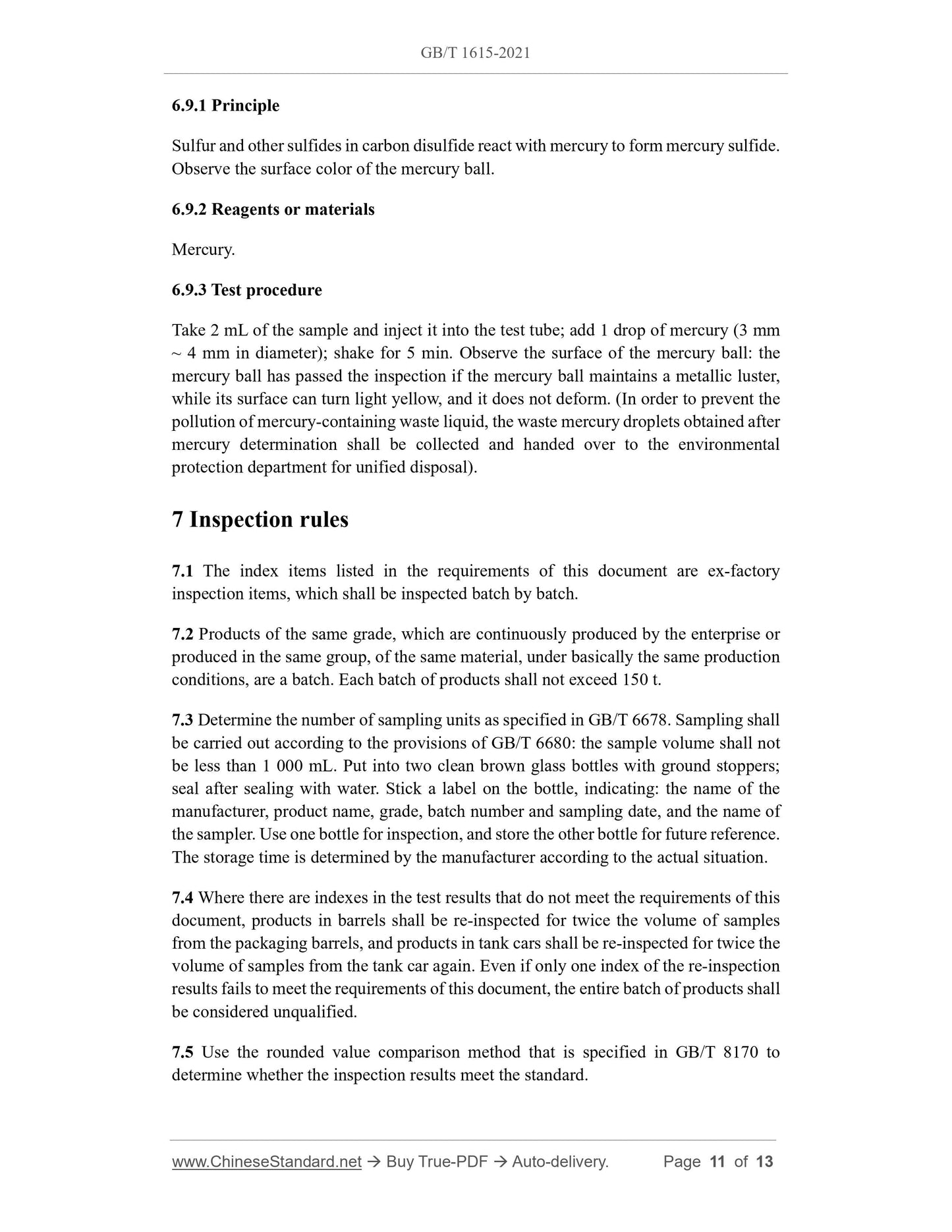1
/
of
8
www.ChineseStandard.us -- Field Test Asia Pte. Ltd.
GB/T 1615-2021 English PDF (GB/T1615-2021)
GB/T 1615-2021 English PDF (GB/T1615-2021)
Regular price
$170.00
Regular price
Sale price
$170.00
Unit price
/
per
Shipping calculated at checkout.
Couldn't load pickup availability
GB/T 1615-2021: Carbon disulfide for industrial use
Delivery: 9 seconds. Download (and Email) true-PDF + Invoice.Get Quotation: Click GB/T 1615-2021 (Self-service in 1-minute)
Newer / historical versions: GB/T 1615-2021
Preview True-PDF
Scope
This document specifies the requirements, test methods, inspection rules and marking,labeling, packaging, transportation and storage of carbon disulfide for industrial use.
This document applies to carbon disulfide for industrial use.
Note: This product is mainly used in the production of viscose fiber, cellophane,
pesticides, rubber additives, flotation agents, chemical raw materials and
solvents, etc.
Basic Data
| Standard ID | GB/T 1615-2021 (GB/T1615-2021) |
| Description (Translated English) | Carbon disulfide for industrial use |
| Sector / Industry | National Standard (Recommended) |
| Classification of Chinese Standard | G14 |
| Word Count Estimation | 10,155 |
| Issuing agency(ies) | State Administration for Market Regulation, China National Standardization Administration |
Share
